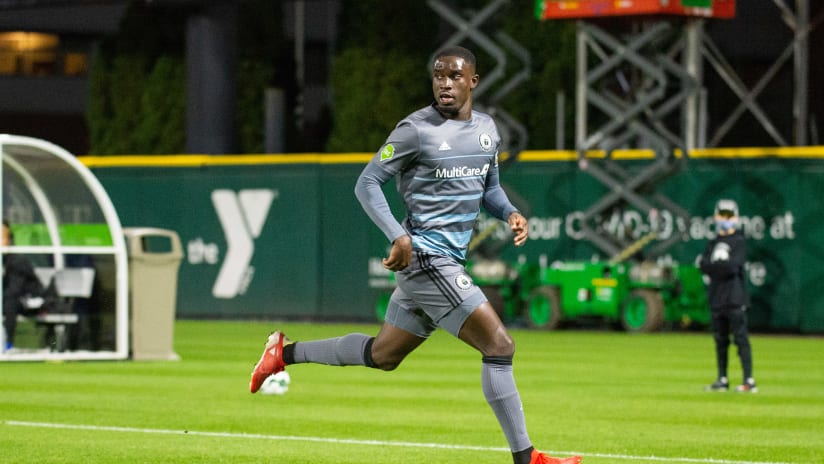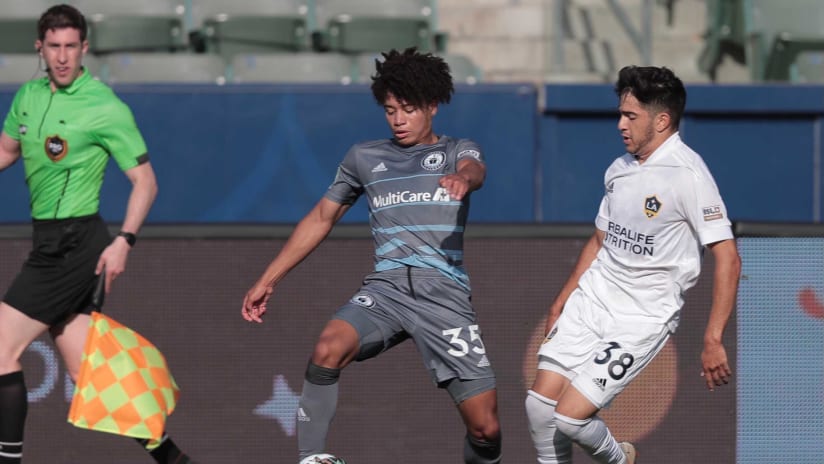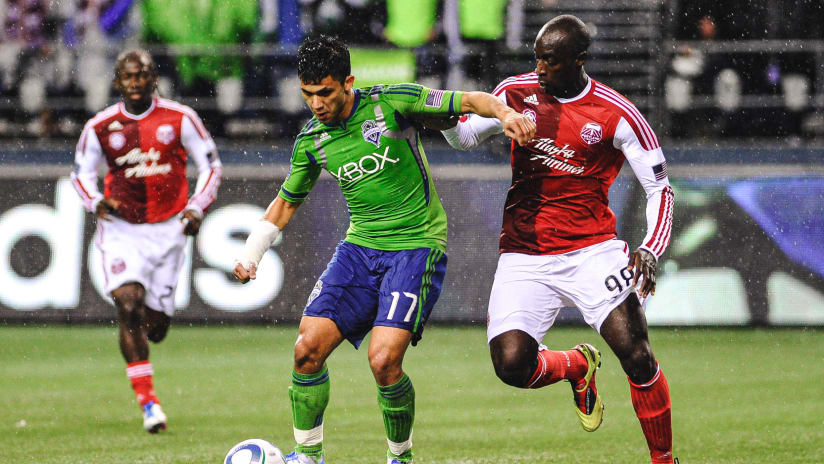Frank MacDonald talks with USL vice president Tim Holt about soccer in North America.
While Major League Soccer continues to grow in stature, the United Soccer Leagues is also gaining respect, especially in light of the recent success from its first division franchises in the U.S. Open Cup and CONCACAF Champions League. USL-1 is proving to be fertile ground for not only developing young players, but also potential MLS markets. Three of the seven MLS expansion bids submitted last week came from groups involving current USL-1 ownership. Heading into what promises to be a busy offseason, Tim Holt, the USL vice president, discusses the effect of this evolving North America landscape.
08-10-20 Holt 300While Major League Soccer is gaining a team in Seattle, the USL First Division will be without one of its most successful franchises come 2009. Now what?
Obviously it’s been a great run with the Seattle Sounders USL-1 franchise, especially over the last five years or so under Adrian’s active stewardship and Brian’s coaching. We’re disappointed to be losing the Sounders as a USL-1 franchise, but we’re excited for the fans of Seattle, and for Adrian. We’re excited that in Seattle that the Sounders’ name and legacy will continue in Major League Soccer. With respect of the Sounders’ USL-1 franchise rights, those rights are in the process of being transferred to Robin Waite, one of their owners, for the purposes of establishing a PDL franchise in Kitsap County. We expect that team, subject to final paperwork, to compete in 2009, so that’s exciting for us. That allows fans on the other side of the Sound to have a home team to root for. That’s a highly competitive league, where you see the stars of tomorrow. The team could be professional or amateur, and Robin’s working on what’s the best model for that market drawing attention, getting fans in there and putting a good product on the field.
How does the USL counsel franchise owners in determining which level is best for them?
Initially when they approach us, everybody has an immediate interest in the USL First Division. As we go through the process we look at three major areas. One is the market itself. Some markets don’t have enough population or corporate base or soccer base to justify doing a USL-1 team. They’re better suited for USL-2 or PDL. The venue options within the market is another; if there’s not a venue that holds more than 2,000, it’s not going to work for USL-1. And the most critical issue is the ownership group. Not everyone feels they need to operate at a USL-1 level. We can make soccer franchise ownership a realistic goal, regardless of their situation. If it’s a youth soccer club wishing to add a senior club or expand their club vertically, a PDL team makes more sense. With 70 franchises across the country, I think we have a model out there that’s resonating with people.
The USL must take a lot of pride in knowing that Seattle is going forward, that there are several W-League teams which will help form the cornerstone of Women’s Professional Soccer next spring. How will WPS affect the health of the W-League?
We’re excited that a first division women’s league is coming. The W-League’s mission remains the same, to be the leading league for developing female players in this country. It’s a developmental league, more than a destination league. WPS actually compliments what we do best. There are several co-ownership situations. In Jersey we have the Sky Blues, there’s the Washington Freedom, the L.A.-based team is half-owned and operated by the Pali Blues, the W-League champions. There’s a strong relationship in Chicago with the FC Indiana. It’s great for the players. We’ll lose some of the top players because the W-League is where a lot of them played since WUSA ceased operations. I actually think we’ll have more interest in starting W-League teams now. We’re counting on WPS being successful and around for a long time to come, and so will the W-League. Hopefully we’ll just enhance what they’re doing at the pro level.
What team has surprised USL officials the most at the First Division level?
The Puerto Rico Islanders fall into that category. They’re the big story. Now, people say it looks easy; they lost in the USL-1final, they’re on the verge of advancing to the knockout stages of the CONCACAF Champions League. But when we expanded into Puerto Rico in 2004, people thought we’d lost our minds. Geographically, they’re nowhere near the U.S. mainland. They’re a U.S. territory but in a different federation. Here we are adding Puerto Rico, with no history or any culture of soccer–they were a baseball culture. They didn’t win for the first 14 games. The support was decent in the beginning. But over the last 4-5 years, they’ve steadily increased corporate support on the island, the team’s gotten better and better, and the ownership’s been committed to putting a good team together. And the atmosphere at the games in Bayamon is second to none. It’s a South American atmosphere, unlike almost anything we have here. They’ve exceeded our expectations. We thought they would become a solid USL-1 franchise, but what they’ve actually done is change the sport culture in Puerto Rico. They’ve used that momentum to create their own domestic league. It’s a great soccer story, your quintessential, example of a team performing even higher than we anticipated they would. Matching teams with markets is not an exact science. But you feel real good about situations such as Puerto Rico.
How does the health of MLS affect USL?
The health of MLS affects all of the entire soccer business in the United States and now Canada. When MLS has successes, they are success for the sport and the market in general. Everybody benefits, whether it’s USL, U.S. Soccer or other organizations. It’s just like when the national team does well in the World Cup. When that occurred in 2002 we all benefited. When David Beckham arrived last year, that brought unprecedented attention to the sport, at least since Pele signed. People start looking at the sport, they may start by looking at MLS, but then they may look at the sport’s infrastructure and how it’s set-up. They become aware of USL. We don’t feel any MLS success comes at the expense of USL, unless it’s when our teams meet on the field.
How does one describe the working relationship between USL and USSF and/or MLS?
The relationship with U.S. Soccer is very strong. Our president, Francisco Marcos, serves on their board of directors and has for over 20 years. We’ve got six different national elite leagues–W-League for the women, the USL-1, USL-2 and PDL, and at the youth level the Super-Y and Super-20. We’re unique members of the federation, in that we’re the only entity that operates within the youth, adult, amateur and pro realms, and both male and female. We’re very grassroots. With MLS the relationship, it’s evolved over time. In the beginning we had a cooperative agreement, sort of like the baseball affiliation system. From the inception of MLS in 1996 through 2002, we were a feeder league, a farm system. Every MLS team had an affiliate team. Players moved back and forth and there were exhibition games. Since 2002-03, the working relationship is more individually created. If there’s a player an MLS team is interested in acquiring, they do so on an open market basis. We do find ourselves on the same side of the aisle with MLS with respect to the issues. There’s room to collaborate a lot more together, and both organizations are working hard to grow the game.
Is MLS expansion putting the USL under strain?
As it relates to all of USL–all the divisions–we’re pretty comfortable. When MLS comes into markets, the effect on USL-2 and PDL is pretty negligible. In the first division, specifically, it’s a challenge for us. MLS is in a very aggressive expansion mode at the moment, and we’re in a lot of the major markets that they’re not in presently. If your follow their expansion footprint, such as the seven groups seeking MLS expansion teams, five of those markets are USL-1 markets. It’s certainly an issue, especially when three of those ownership groups are currently in our league, in Montreal, Vancouver and Portland. So it’s a challenge for us as a league as we try to solidify, stabilize and grow. However, we also have unprecedented interest in the performance of our teams across all competitions, not just this year but over the several years. We think our product is very strong. Until MLS gets out of this mode of expansion and becomes a more mature league, settling into a comfort zone for the number of teams, it will continue to be a pretty dynamic situation. We’ve got to continue being flexible and adaptable like we’ve done in the past.
How do you explain the fact that in Open Cup and Champions League, USL teams have faired so well?
It’s not a fluke. At first people thought this would just happen every 10 years or so. But the quality of play in USL-1 has increasingly improved over the last five years, in particular. That’s not to say a USL-1 team could play in MLS and make the playoffs, but there’s not an enormous gap in terms of quality. There’s a perception gap which is probably larger. MLS, commercially, has done a ton of great things in the last few years to grow their business, grow their profile domestically. On the field their product has improved and ours has improved immensely. Our model encourages teams full autonomy with respect to how they put the team of players together. There are minimal restrictions to go out and sign players. There’s no salary cap. This creates incentives. We’re not going to have a team in the Open Cup final every year, but looking back the past 2-3 years we always have at least one team in the semifinal. We’re not complacent and we’ll continue to move forward, and all the credit goes to the teams for the players they’re signing.
When you’re out there, talking to potential partners or testing the waters for investment in the league, what’s the selling point of USL?
Another selling point of USL, in a broader sense, is that hometown heroes type of thing. That may sound a bit cliché. It makes soccer ownership accessible for people, it provides affordable family entertainment. We have 125 franchises in a hundred markets, and there we’re the highest level of soccer. MLS compliments that with another 15-16 markets. You can take your family out to a game, it’s a good event, it’s affordable, and we’re doing that while we’re growing the sport of soccer. If you look at a map, we’re in a lot of places and there are also a lot places where we’re not. We’re well positioned to move into those places.
There will be a new USL-1 team in Austin next year and in Tampa in 2010. Are there plenty of promising markets to go around?
We’ve never had more interest. We won’t rule out putting a team in one of the top 20 markets if it’s the right group or stadium situation. But our primary focus is on markets 20-60 in the U.S. and Canada, sort of the mid-major markets. These can support USL-1 teams and it’s where they will get a significant amount of attention, and they’re not on the short and midterm MLS radar screen. We’ve been much more proactive developing leads in those markets. We have more interest from groups in those markets than ever before, partly driven by the success of the teams on the field and partly by the growth and stability of league. Our approach is a little different. We’re not as public in talking about groups or cities we’re going after, but we have at least half-dozen groups in very real dialogue for expansion for early as 2010. In a difficult economic period, there’s a lot more interest in soccer and a lot more people are taking the business of soccer more seriously. It’s an exciting time in the game and we’re feeling that.
USL
10 Questions with Tim Holt
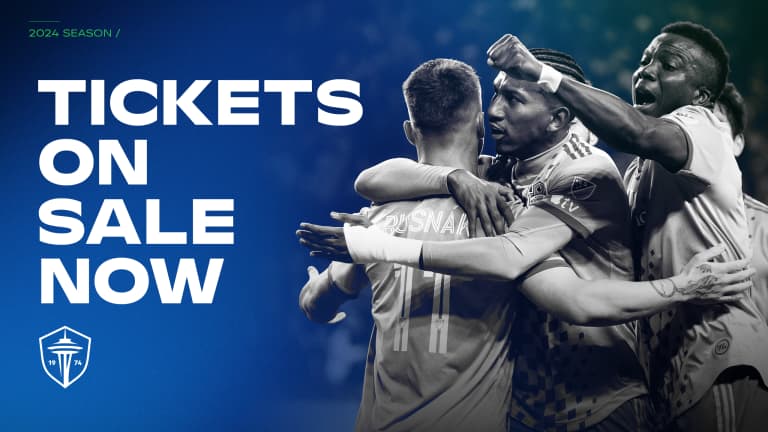
SINGLE MATCH TICKETS AVAILABLE NOW
Grab your tickets and celebrate our 50th Anniversary Season!
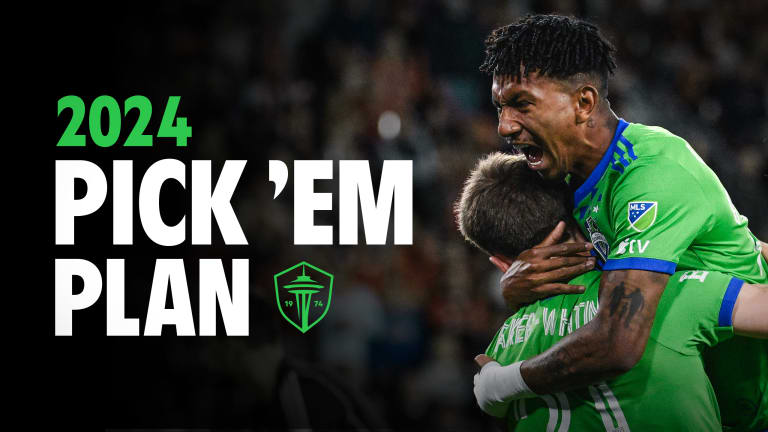
2024 PICK ’EM PLAN
Pick your matches and unlock exclusive benefits such as merchandise, on-field experiences, Suite upgrades, and more!

2024 Season Memberships
Our 50th Anniversary season meets our most fan-friendly membership yet.


